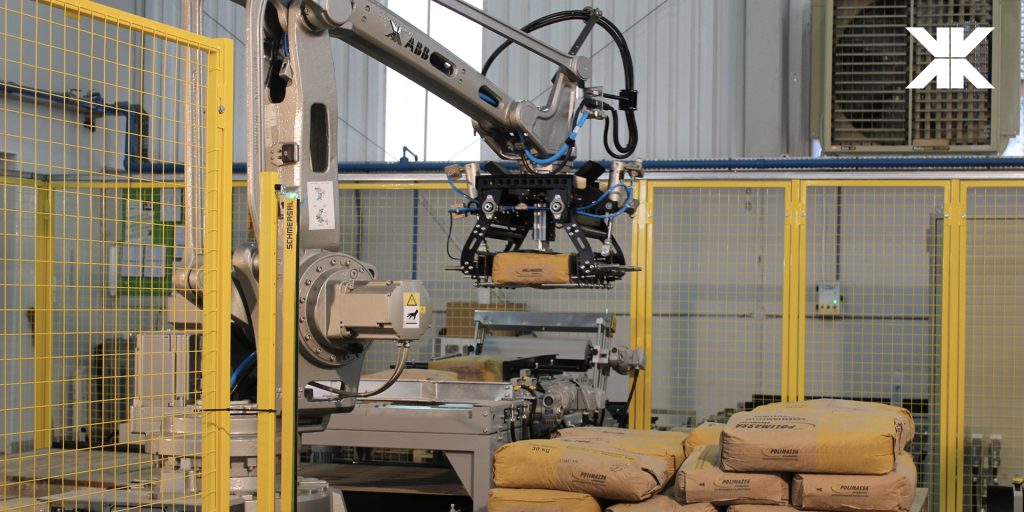
Categoria: Bagging, Movement, Processes
HOW AUTOMATIC BAGING AND PALLETIZING SYSTEMS INCREASE PRODUCTIVITY
Before any decision to automate the bagging sector, industries usually report several problems through diagnostics and evaluations of productive data.
In the past, sectors like this required at least four operators per shift depending on the amount of bags produced.
They are collaborators to apply the bag, to supply it with product, move it to close, sew or seal it and move it again to the pallet, positioning each one for transport with the forklift.
In this scenario, there is still the weight assessment stage, in which flaws and irregularities are often identified. The precision in this manual step of bag filling varies greatly, causing waste and reduced profit margin.
When increasing the productive demand, some industries usually make provisional decisions to increase shifts or staff.
Rotation among these employees are often applied to reduce the ergonomic risks of repetitive manual handling with large volumes and weights.
Normally, it is with this diagnosis that we present the complete solution from bagging to palletizing.
A solution that expands production capacity improves the accuracy and quality of life of employees, as well as reduces manpower.
Composition of an automated bagging system
A fully automated bagging system comprises:
Bag applicator robot – collects the bag from the dispenser and applies it to the bagger spout, releasing it after filling. This robot greatly impacts productivity and the number of workers needed to perform these tasks.
Bagging machine – with automated layouts, it is designed to work with open mouth bags, the KBA line. It is a solution designed to bag granulated, pelletized, bran and powdered products.
Closing system for bags – sealed or sewn closure according to demand.
Transport system – the demand to be met with the interconnections through conveyor belts and systems is crucial to efficiently meet the speed of the line. The conveyor system moves bags from one process step to the next.
Palletizing – automatically places empty pallets on the line and slip sheet on the pallet, the robotic arm, with a dedicated gripper for the type of bag, collects and positions the bag on the pallet. This is the automation step and the one with the greatest impact on end-of-line productivity.
Stretch – wraps the pallet with stretch film, completing the complete bagging process with efficiency, safety and product standardization.
Automated bagging and palletizing systems are cost-effective
All this automation requires a high investment, but it provides an excellent return, in addition to increasing business opportunities. Here are 6 factors that prove how profitable automatic palletizing is.
Automated systems generate less wear, greater durability and better use of resources and time.
Consider investing in stages. All solutions presented above can be sold separately; it is up to the company to find out what is needed to reach the necessary speed and boost production.
Interested? Get in touch with us and find out about financing options to acquire our machines and automate this production stage by scaling your production.







